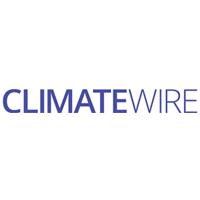Media Watch Archives
How eroding beaches led to a Calif. commuting nightmare
ClimateWire -
A disappearing California beach is partly behind the weekslong closure of one of Amtrak's busiest routes in the latest example of how changing weather patterns and eroding shorelines pose a threat to the state's coastal rail corridor. … “That stretch of the coast has really lost a significant amount of sand over the last decade or two,” said Brett Sanders, professor of civil and environmental engineering at University of California, Irvine. “The beach that was once there to defend the railroad and defend housing and other infrastructure is no longer there.” Read More
A Reckoning With Mother Nature In South OC As Coastal Train Travel Is Suspended
LAist -
Brett Sanders, professor of civil and environmental engineering at the University of California, Irvine said replenishing the sand that's been lost — and making sure sand washed down by rivers can get to the beach — could be an alternative way to protect the shoreline from further erosion. "Investing in beaches is something that would offer benefits for so many people and can be done in a way that's really good for the environment," he said. Read More
What cities can do better to protect themselves from hurricanes and other floods
NPR -
As if Hurricane Ian didn't cause enough damage, hurricanes are only growing stronger and more frequent due to climate change - same with other mass flooding events. So how can communities better protect themselves from rising waters? Well, to help us answer that question, I talked earlier with Brett Sanders. He's a professor of civil engineering at the University of California, Irvine, and he specializes in urban flooding. And I started by asking him, are we seeing storm damage more often now? And if so, why? Read More
Startups & Innovations – Partnerships
Orange County Business Journal -
Syntr Health Technologies Inc., an Irvine micro-fat processing startup based at UCI’s Cove, is teaming up with Venice-based HappyBond to provide treatments for dogs with knee and joint osteoarthritis. … [Syntr CEO Ahmed] Zobi received his B.S. in Biomedical Engineering, specializing in micro and nanotechnology, from UCI. [Subscription required, you can request an electronic copy of the article by sending an email to communications@uci.edu.] Read More
Will Iran's climate inaction fuel rising disaster threats?
Reuters -
But Amir Aghakouchak, an Iranian-American professor of civil and environmental engineering at the University of California, Irvine, who has written on water scarcity in the country, said he was not sure a higher profile would translate to action on the ground in Iran. "Unfortunately, when it comes to water and environmental management, I am not optimistic about the level of government engagement," he said. Read More
Big waves move railroad tracks, again, in south San Clemente
Orange County Register -
UC Irvine environmental engineering [Professor] Brett Sanders said those sand replenishment projects are needed. The drought the past few years is contributing to the area’s lack of sand. With no rain pushing sediment down the nearby creek, sand isn’t being redistributed naturally offshore. “One of the links is, there just hasn’t been enough sand supply from that creek to keep a beach that’s going to defend the rocks and railway from the stress of these waves events,” he said. “That beach has really thinned out over time because there’s no sand supply.” [Subscription required, campus-wide access provided by UCI Libraries. Sign-up here: https://guides.lib.uci.edu/news/ocregister] Read More
Monitoring a Pregnancy at Home With a Smartphone This wearable device provides real-time ECG monitoring of a fetus
IEEE Spectrum -
“Lullaby was made to push the boundaries of the field by creating an algorithm that could process high-resolution ECG in real time and on a wearable device,” explains Daniel Jilani, an undergraduate researcher at University of California, Irvine, who co-led the development of this technology. Read More
UCI tests out futuristic smart grid technology at faculty home
KCBS -
Some professors at UC Irvine, like John Smith, got to experience a part of the future after the university installed smart grid technology into their homes. … The UCI study wanted to test the performance of the electrical grid and reduce energy costs and emissions. … "We must have energy storage if we are to make a highly renewable future work," said [Jack] Brouwer, [professor and director Advanced Power and Energy Program]. Read More
Iranian oil province suffers from pollution, water scarcity
AL–Monitor -
“Like most parts of Iran, Khuzestan still doesn’t have a fully functioning wastewater collection and treatment facility. This means that a significant amount of waste, including human waste, ends up in our rivers and groundwater resources untreated,” said Amir Aghakouchak, a professor of civil engineering, environmental engineering, and earth system science at University of California, Irvine. Read More
Experts concerned with increased beach erosion in wake of Hurricane Kay
KCBS -
"We saw around five feet of vertical displacement of the sand," said UC Irvine Engineering Professor Brett Sanders. "That means that walkways down to the beach aren't accessible." Sanders says that the tropical storm isn't the only factor that contributed to the erosion, noting that Friday night brought a rare series of events unlike any California has seen in recent history. Read More









